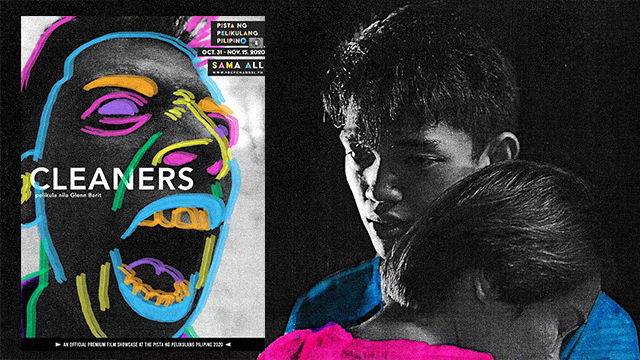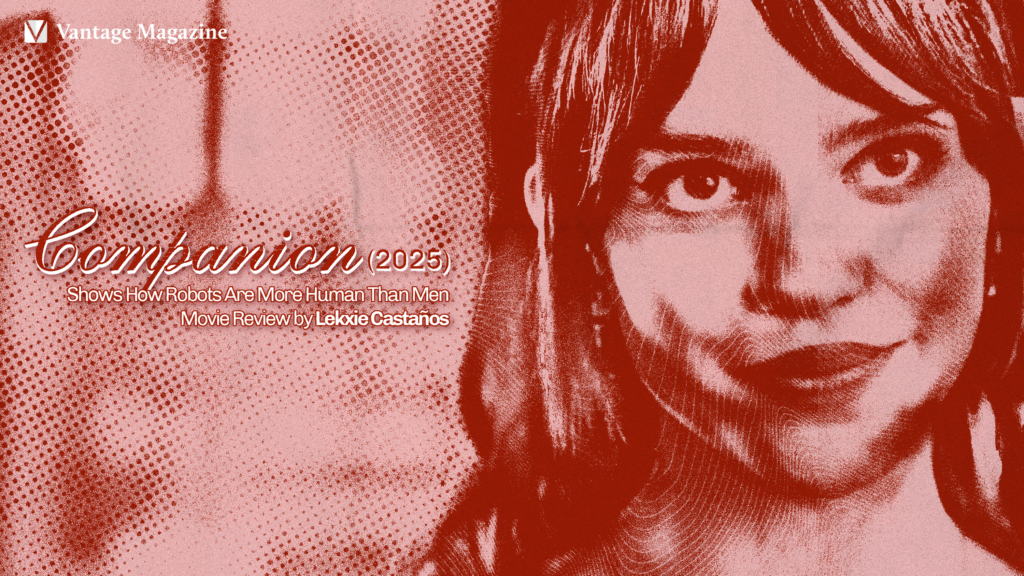Warning: This listicle contains mild spoilers.
THE FILIPINO coming-of-age experience is unlike any other. It’s common for Filipino kids to grow up on Western coming-of-age stereotypes—the prom queen, the jock, or the smart kid, among the number. We’re probably more likely to relate with the class president na naghahanap lang ng respeto in Glenn Barit’s Cleaners (2019), or the stressed students getting a bite of fishball in between classes like in Antoinette Jadaone’s Alone Together (2019). Attempts to immortalize these unique experiences through film are well received by the Filipino youth, but are they diverse in their gender representation?
One way we can get a more critical understanding of this genre is through the Bechdel test. Originally coined by graphic novelist Allison Bechdel, the Bechdel test suggests a criteria to assess female representation in a media text. The comic strip in which the test first appeared cites three basic rules: (1) there must be two women (2) who talk to each other (3) about something other than a man. The test has been updated over time to include the requirement that these women are named. In this listicle, we highlight five Filipino coming-of-age films and determine whether they pass or fail the Bechdel test.
Result: Passed
Glenn Barit’s Cleaners (2019) captures the chaotic experience of high school in the Philippines. From classroom squabbles to heartbreak, Cleaners shows that there is nothing unblemished about high school. The film is set in Tuguegarao and features first-time actors, making the experience all the more raw. It’s considered a coming-of-age story because of how it portrays an increasing awareness about the real world among its characters—a world that even high school can’t protect us from.
Cleaners passes the Bechdel test by a very narrow margin. In the Nutrition Month segment, Stephanie gets into a fight with another girl over a dance formation. Later on, we find out that the girl’s name is Diana from an announcement post. Another conversation between two women occurs in the Prom story where two girls gossip about Britney. However, they are not explicitly named.
She’s Dating the Gangster (2014)
Result: Failed
Ask any KathNiel fan to name their top five movies featuring the love team and the list will most likely include She’s Dating the Gangster (2014). The romantic comedy follows the story of Kenji—the high school’s most infamous “gangster”—as he tries to win back his ex-girlfriend Athena by feigning a new relationship with a girl of the same name. As romantic comedies go, what started out as mutual disgust between Kenji and Athena soon becomes a legitimate love affair with real feelings.
As the unexpected romance blossoms, Sarah—Athena’s best friend—is there to witness it all. Throughout the film, she and Athena have numerous conversations but never talk about anything other than Kenji. Although the film meets two of the criteria for the Bechdel test, it ultimately fails to include conversations between women besides those about men.
Result: Failed
There are very few things more coming-of-age than heartbreak. JP Habac’s I’m Drunk I Love You might not be your first pick for a coming-of-age movie, but it has all the elements of one. The film follows best friends Dio and Carson in their last few days before college graduation. On a weekend trip to La Union, Carson navigates her best-kept secret: Seven years worth of feelings for Dio.
The film moves through various emotions that come with life’s early phases of transition—all to the tune of love, friendship, and Burnout by Sugarfree. However, the film fails the Bechdel test on two accounts. The first conversation that Carson has with another woman takes place outside of the University of the Philippines Film Institute who is unfortunately unnamed. Pathy, Dio’s ex-girlfriend who wants to rekindle their relationship, is the only other woman she has a substantial conversation with. Even then, they are always in the presence of another man–Carson’s best friend Jason.
The Hows of Us (2018)
Result: Failed
The Hows of Us is not what most people would expect out of a KathNiel movie. It is essentially a romantic comedy following a couple going through the stages of young puppy love to devastating heartbreak. What sets it apart from their other films is its confrontation with more mature themes in romance, such as the resentment that seeps in once the honeymoon stage is over. The stage of the relationship that is ripe with infatuation has less screen time; more attention is given to the hot-blooded arguments and the inevitable separation that the couple eventually deal with.
Early in the movie, the audience is introduced to Tita Lola, the grandmother of George. She has yet to see just how ugly the relationship gets so she lovingly supports George’s relationship with Primo, her granddaughter’s driven albeit naive boyfriend. When she gets sick, the couple makes a promise to take care of the house she will leave behind. This is the only conversation in the film that involves two named female characters who are not talking about a man. However, the inclusion of Primo in the conversation ultimately makes the film fail the test.
Alone/Together (2019)

Result: Passed
Alone/Together tells the story of Tin and Raf, two college students with great futures ahead of them. One thing is clear to the couple: They will spend those futures together. Tin dreams of becoming a museum curator while Raf aims to become a doctor. Fast forward to five years later, and things are not as what they planned. The two have not spoken in years but they meet once again by chance and, despite their involvement in other relationships, they fly to New York City together. Once there, they can’t help but fall in love as if they never parted ways.
While in New York, the two visit art museums all over the city. In one of the museums, they run into a Pinay living in New Jersey who aspires to be a painter named Alex. Tin, whose interest was piqued immediately, asks Alex about her art career and to see the latter’s paintings.
Considering these scenes, Alone/Together fulfills all the criteria listed by Bechdel and is one of the only two films on this list that does so.
These Bechdel test results remind us how much work we still need to put in for better representation. However, this is not a scientific test and it does not holistically represent women in media; neither is it meant to antagonize films that fail. Even the first Shrek (2001) film doesn’t satisfy the criteria! Take these results with a grain of salt and remember that the issue of gender representation runs deeper and wider than one conversation.
Nonetheless, the Bechdel test calls for a more critical look at gender representation in media. We must be sensitive to these matters because it makes us more responsible storytellers and viewers, especially in relation to a genre that relates so closely to one’s formative years.






